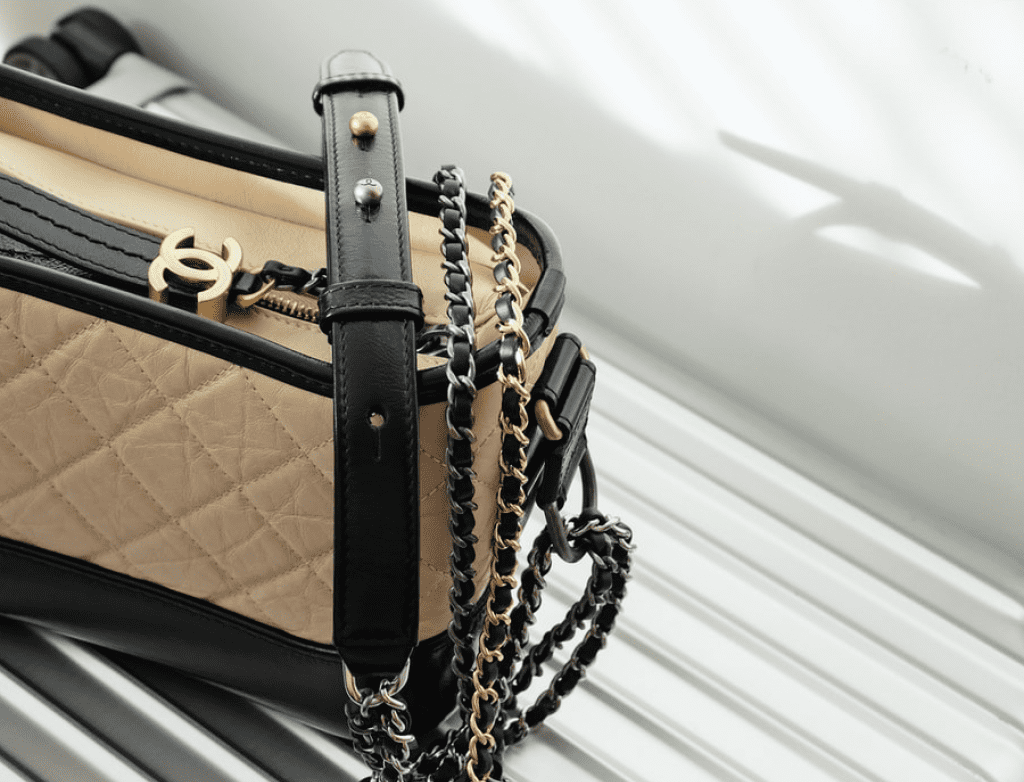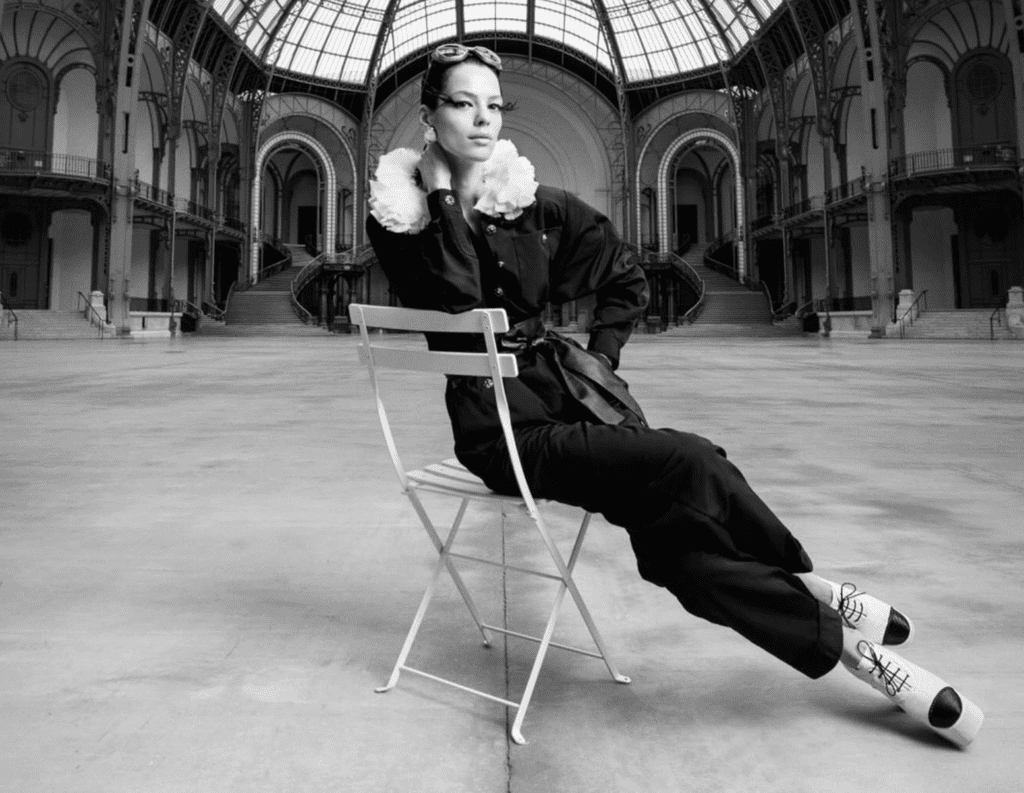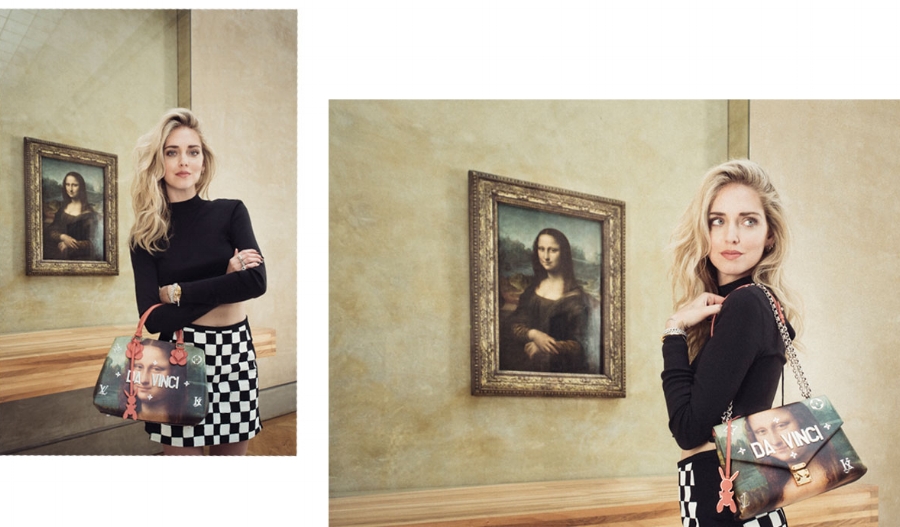
image: Louis Vuitton
In compiling the most recent version of “The Annual Brand and Influencer Report: The Good, Bad, and Highly Problematic,” our yearly review of fashion industry influencer and brand disclosure practices, a few key trends emerged. The Federal Trade Commission (“FTC”) has long required that both advertisers and promoting parties disclose material connections that consumers would not expect so that consumers can make purchasing decisions accordingly. In practice, this means brands and influencers maintain a common duty; influencers must include clear disclosure language, such as #Ad, on their posts when applicable and brands must ensure that their influencers are doing so.
In reflecting on the data we compiled by reviewing over 41,000 Instagram posts (and in some cases, related Twitter and Facebook posts) by over 50 different influencers (we ultimately highlighted 25 of them) and upwards of 300 featured brands, here are a few of the key shortcomings in connection with the fashion industry’s utilization of influencer marketing are as follows …
1. Improper Disclosures
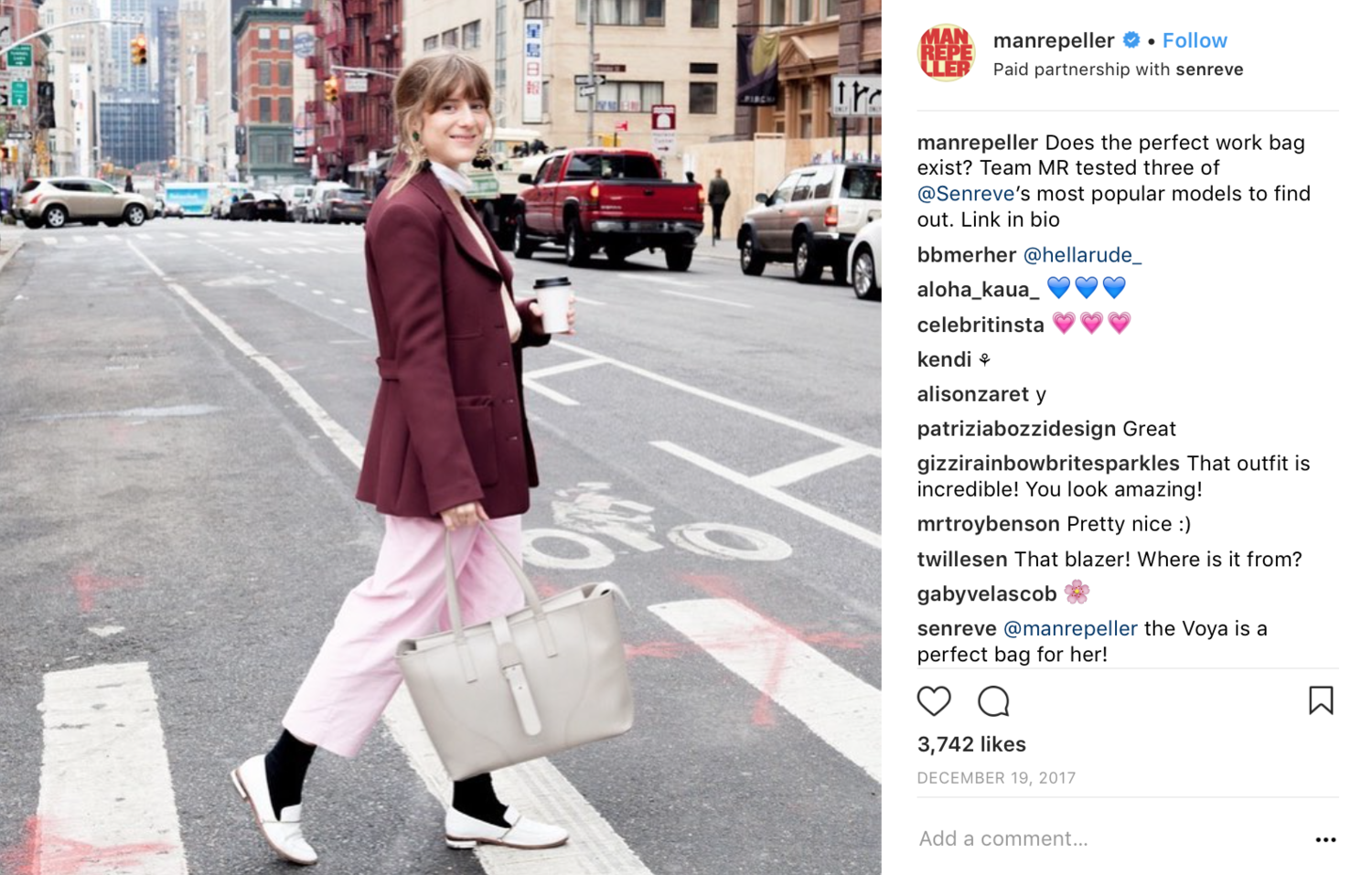
image: @manrepeller
Roughly 90 percent of the posts we analyzed utilized disclosure methods or language that the FTC has stated it would likely deem to be invalid, due to a lack clarity and conspicuousness in regards to the disclosures. In most instances, this took the form of influencers exclusively utilizing Instagram’s “Paid Partnership” feature, which the FTC has stated that its staff does not think “suffices” as a proper disclosure, likely due to the lack of bold type in which the “Paid” tag is presented and ease with which consumers could miss the tag when swiping through their Instagram timelines. (Note: Based on language from the FTC’s Q&A series in September, it appears as though Instagram implemented the “Paid Partnership” feature without consulting with the FTC).
Other failures frequently came in the form of improper placement of disclosure language, either after Instagram’s “More” button and/or amongst other hashtags, making the disclosure hashtags less obvious than if they were not mixed in with other tags.
The FTC has explicitly spoken to both points. In terms of placement of disclosure language above the “More” button, the FTC stated in April 2017 that “consumers viewing Instagram posts on mobile devices typically see only the first three lines of a longer post unless they click ‘more,’ which many may not do.” With that in mind, the FTC has held that “when making endorsements on Instagram, [influencers] should disclose any material connection above the ‘more’ button.”
As for the mixing of hashtags, the FTC has stated, “#ad is sufficient as long as it’s easily noticed. But if #ad is mixed in with links, handles or other hashtags, readers may naturally just skip over all that clutter. With multiple links and hashtags, #ad may go unnoticed.” Moreover, the FTC stated “a disclosure placed in such a string is not likely to be conspicuous,” and is, therefore, likely to be invalid.
2. Affiliate Links
Influencers derive a significant amount of income from their affiliate relationships with retailers, which are facilitated, in large part, by the likes of ShopStyle and LIKEtoKNOW.it. As set out by Techcrunch, LIKEtoKNOW.it – a shopping discovery app owned by Dallas-based digital firm, RewardStyle – allows influencers to “create clickable links from their content that lead directly to retailers and brands. When a reader clicks through and makes a purchase, retailer makes a sale, and LIKEtoKNOW.it and the influencer get a cut of the profits.”
This is big business. As WWD noted last fall, “24 percent of Nordstrom’s mobile web traffic for the month of August [2017] came from referrals, with influencer network RewardStyle accounting for 79 percent of them.” On one day in July 2017, alone, “a time when retail sales are notoriously weak, RewardStyle’s crop of influencers drove $26 million in retail sales in a 24-hour period.”
With such figures in mind, and also likely taking into account the lack of awareness amongst at least some consumers as to the workings of the influencer-affiliate relationship, it should not be surprising that the FTC stated in its September 2017 guidance document, “The FTC’s Endorsement Guides: What People Are Asking,” that an influencer must “disclose [his/her] relationship to [affiliate] retailers clearly and conspicuously.” In its influencer Q&A, the FTC further stated, “We advise disclosing affiliate relationships.”
This is an area in which almost all of influencers we surveyed fell short. While some included terms about their affiliate relationships in the terms and conditions sections of their websites, this would likely not suffice as a disclosure, as the FTC has stated that “putting disclosures in obscure places – for example, buried on an ABOUT US or GENERAL INFO page, behind a poorly labeled hyperlink or in a “terms of service” agreement – isn’t good enough.”
Given the frequency with which top influencers are making use of affiliate relationships to drive revenue and the increasing dollar amounts that are being tied to this practice (usually in the tens of millions, as indicated in the Nordstrom example), this is likely something that FTC may soon pay closer attention to.
3. Brands/Retailers are Just as Bad
Influencers often take the fall when disclosures go wrong or are not in play at all (these are their Instagram accounts, after all), but brands are expected to play an equally significant role, and in many cases, brands are potentially working to obscure the relationships they have with influencers. While some have taken preliminary steps to ensure that influencers are aware of the legal requirements when it comes to disclosures – Amazon, for instance, included explicit language in the contracts that influencers signed in connection with its recent Calvin Klein partnership requiring disclosures – others are lagging far behind.
As noted in our Annual Brand and Influencer Report, which was published today, Billabong emerged as an interesting example of brands that appear to be putting forth paid-for content as what might be perceived as otherwise objective material. For instance, the surfwear brand clearly maintains a relationship with super-influencer Julie Sarinana (as set forth by Billabong in a blog post on its website), and yet, Sarinana failed to disclose nearly 30 Billabong-related posts that appeared on her Instagram account. This falls just as much on the brands as it does on the influencer, as brands are expected – by the FTC – to monitor such social media activity to ensure that appropriate disclosures are being used.
As Billabong noted on its website, in connection with an editorial starring Sarinana, it has “been itching to bring Jules to the island of Oahu.” In addition to the disclosure-less posts on Sarinana’s Instagram, Billabong presented its own similar content on its website and Instagram account as though a formal endorsement relationship did not exist. In addition to referring to Sarinana merely as a “friend of the Billabong Womens fam” – as opposed to a compensated endorser – at least some of its Instagram posts, such as one that reads, “When @sincerelyjules is in our Aloha Babe dress,” are likely unclear to consumers.
Given the frequency with which brands routinely repost imagery of influencers and celebrities wearing their garments (sometimes in lieu of a relationship between the parties and many times without reflecting a formal endorsement situation), the sponsored nature of Billabong’s posts and other such posts might be unclear to consumers.
Another entity that was a clear red flag in connection with this year’s ranking in this sense is Los Angeles-based e-commerce giant Revolve.
4. High Fashion is Falling Behind
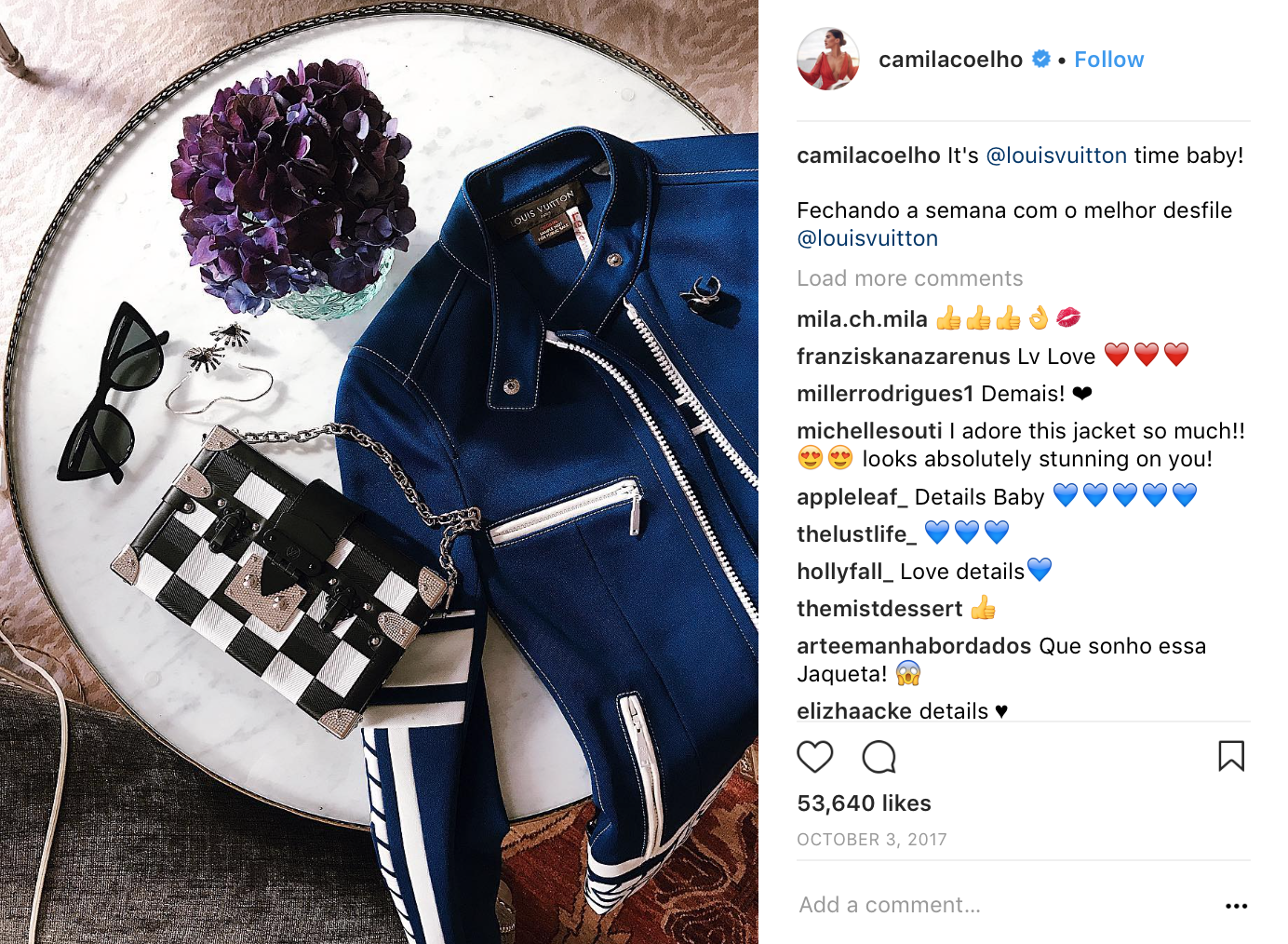
image: @camilacoelho
While many mainstream, mass-market brands continue to run afoul of the FTC’s guidelines, high fashion brands were of particular interest in connection with this year’s ranking due to the widespread lack of clarity associated with a significant number of influencers’ posts. Aside from undisclosed gifts, from Louis Vuitton x Jeff Koons bags to Christian Dior and Valentino products, the influencers surveyed almost all failed to properly disclose relationships with some of the fashion industry’s most esteemed fashion houses.
Camila Coelho, for instance, appears to have been dressed by Louis Vuitton for the brand’s Spring/Summer 2018 womenswear show in October, as indicated by the “Sample” garments that appeared in her Instagram photos. The same can be said for many other influencers.
Moreover, if influencers are being paid (or otherwise compensated, i.e., having their travel expenses covered or being gifted garments or accessories) to attend runway shows or events and cover them on their Instagram accounts, that must be disclosed. This is an area that should be addressed by brands, likely because it amounts to a material connection that would not otherwise be clear to most Instagram users.
* This is the latest in a series of articles – entitled, The Business of Influence – dedicated exploring the state of influencer marketing, which you will find this week on TFL










